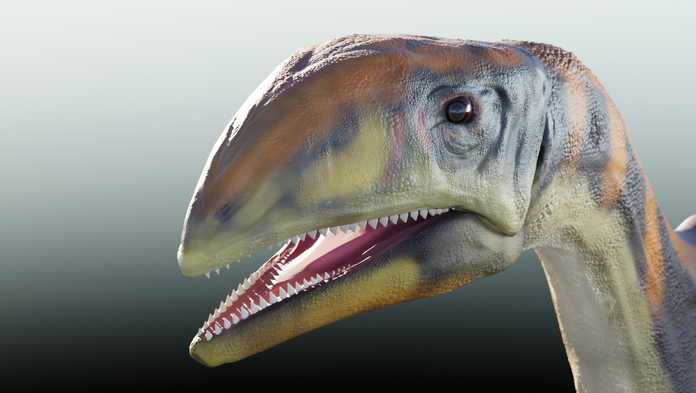TORONTO -
Researchers have identified a brand new dinosaur species from well-preserved skulls found in Greenland: a two-legged herbivore that researchers believe is the first evidence of a “distinct Greenlandic dinosaur species.”
Although the two skulls that helped make this discovery were unearthed in 1994 in East Greenland, scientists believed one of the skulls belonged to a Plateosaurus, a long-necked dinosaur that was common in the Triassic Period in Germany, France and Switzerland.
Now, years later, researchers say the skulls are distinct in ways that make it clear that they belong to a new species.
"It is exciting to discover a close relative of the well-known Plateosaurus, hundreds of which have already been found here in Germany," co-author Oliver Wings from Martin Luther University Halle-Wittenberg, said in a press release.
A paper published last week in the journal Diversity describes the new dinosaur, which has been dubbed Issi saaneq, chosen as a tribute to Greenlandic Inuit, meaning “cold bone” in their local language.
Issi saaneq roamed around Greenland 214 million years ago during the Late Triassic Period, at a time when Greenland was part of the northern rim of the supercontinent Pangaea, which was just starting to break up to form the Atlantic Ocean. Issi saaneq was a medium-sized dinosaur belonging to a group of dinosaurs called sauropodomorphs. This group includes sauropods, the well-known, enormous long-necked herbivores that feature in many dinosaur films and play sets.
The new dinosaur shares some similarities with sauropods, such as a long neck, but would’ve been much smaller.
Researchers determined that Issi saaneq was a distinct species after they performed a micro-CT scan on the bones, and then created a digital model of what the skull would look like if it was fully formed. This method also gave them a look at the internal structures of the skull which weren’t visible without damaging the bones.
According to the paper, the skulls differ from other similar dinosaurs through the combination of a few unique traits, including four cranial structures unique to Issi saaneq and differences in the length and shape of certain bones in relation to each other.
"The anatomy of the two skulls is unique in many respects, for example in the shape and proportions of the bones. These specimens certainly belong to a new species," Victor Beccari, lead author of the paper, who carried out the analyses at NOVA University Lisbon, said in the release.
The two skulls differ in size related to each other, but researchers believe this is because one is an adult and one is a juvenile of the same species.
Issi saaneq also bears some clear similarities to a group of dinosaurs who were found in Brazil almost 15 million years before Issi saaneq existed, and researchers say that these dinosaurs, along with Plateosaurus, are part of a subgroup of sauropodomorphs that encompasses “relatively graceful bipeds” around 3-10 metres long.
According to the paper, some of the traits found in Issi saaneq are ones that previously were thought to be exclusive only to species found in what is now Brazil.
The discovery of this new species adds another missing piece to the story of how sauropodomorphs evolved and just how these species fanned out across Pangaea, with Issi saaneq marking the first sauropodomorph to be found this far north.






































